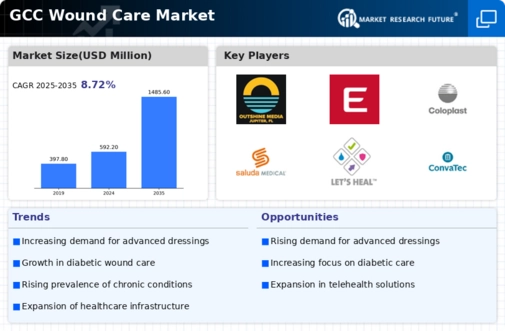GCC Wound Care Market is currently experiencing significant growth driven by several key market drivers. One of the primary factors is the increasing prevalence of chronic wounds, including diabetic foot ulcers and pressure injuries, particularly in countries like Saudi Arabia and the UAE where diabetes rates are notably high. This trend is evidenced by government health initiatives aimed at promoting awareness and management of chronic diseases. Additionally, there is a rising aging population in the GCC, contributing further to the demand for advanced wound care solutions.
Opportunities to be explored in GCC Wound Care Market include the adoption of advanced wound care products, such as hydrocolloids, hydrogels, and even biologics that are gaining traction among healthcare professionals.
The current global trends indicate a move in the direction of wound care products which are more eco-friendly, and this gap has been recognized by consumers and providers of healthcare in the region. The introduction of telemedicine for wound assessment and management is just one of the new technologies which, when integrated with other forms of healthcare, make it possible for the GCC to work towards accomplishing its goals of improving healthcare services.
Alongside this, there is also a pronounced focus on sustainable eco-friendly products among consumers and healthcare providers as well as innovations where wound dressing materials are concerned, with newer products coming out which are more absorbent and enable faster healing. These materials not only increase the efficacy of treatment but also decrease costs.
In addition, healthcare systems within the GCC are actively encouraging partnerships between pharmaceutical companies and academic institutions to address the region's specific health problems by devising appropriate localized wound care products. Altogether, these are clear signs of a rapidly evolving market within the region, which is expected to grow and innovate in wound care services in the near future.



















Leave a Comment